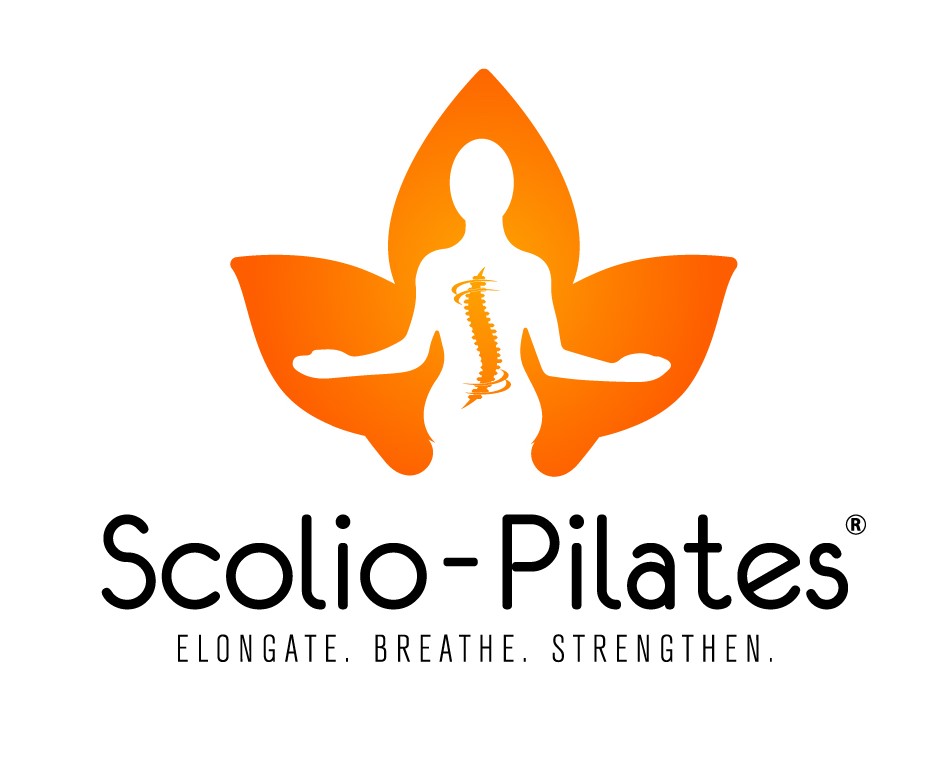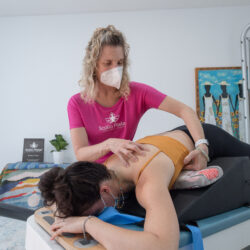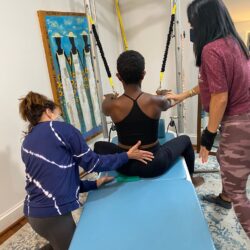When it comes to scoliosis, 4 management options are considered: observation, scoliosis-specific exercise, bracing, and surgery. Surgery is the last resort, and less than 2% of scoliosis patients will ever need surgery. However, if you are one of those people, then 2% suddenly doesn’t feel like such a small percentage. If you are looking at having surgery and you are unsure, we have some news for you that might ease that stress.
In the United States, where we are located, it is generally recommended that curves over 50 degrees be surgically straightened or stabilized if straightening isn’t possible. Why? Can’t we live happily with our curvy spines? No, as our spines become a bit too curvy, the lungs and heart are impacted and don’t function as well as they should: thoracic insufficiency syndrome. Having surgery can stabilize the thoracic spine and region, allowing the heart and lungs to breathe and beat more easily. So you see, at times, scoliosis surgery is life-saving. It’s not a matter of appearance — it’s a matter of breath and life.
Why is scoliosis-specific exercise important if surgery for some is inevitable? Two words: Strength and flexibility. We have reports from Scolio-Pilates Practitioners that have had spinal fusion that their doctors were very pleased with the amount of mobility available in their spines. Why is that important? Because the surgeon can achieve more correction if there is more mobility. We also have a practitioner in Arizona, Patti Green, who works primarily with children, and the surgeons she works with are very pleased with the outcomes that the children achieve after surgery. They recover very well. I don’t have blogs from these two sources to link to yet, but I’ll get them linked here as soon as they are ready.
Again, why surgery? Why not live with the curve, especially if my heart and lungs are fine? According to the Society on Scoliosis Orthopedic Rehabilitation and Treatment (SOSORT), “Over 50° [scoliosis curves], there is a consensus that it is almost certain that scoliosis is going to progress in adulthood and cause health problems and reduction of quality of life.” It is also presumed that a scoliosis curve will progress .5 to 1 degree a year. For this reason, when a surgeon sees a child of 16 years old with a 50-degree curve, her thought is forward 40 years to when the child is 56 and now the curve measures 75 degrees? 90 degrees? This is the concern.
It is important to educate yourself about scoliosis surgery. The best place to do that is with those who specialize in surgery. We recommend the information found at Nemours Childrens Health for a brief overview. For an in-depth 12-page PDF on scoliosis surgery, please see this document: The Scoliois Research Society Answers Questions About Scoliosis Surgery.
Are you ready to begin preparing for or recovering from your scoliosis surgery today? Whether you are someone living with scoliosis or a professional helping those with scoliosis, join our Scolio-Pilates On Demand here. You will have two weeks of free scoliosis-specific exercises with a live class every Thursday at 3 pm ET (New York, USA) and access to over 100 classes. It’s time to take control. Be a Scolio-Mover!”
Negrini, S., Donzelli, S., Aulisa, A.G. et al. 2016 SOSORT guidelines: orthopaedic and rehabilitation treatment of idiopathic scoliosis during growth. Scoliosis 13, 3 (2018). https://doi.org/10.1186/s13013-017-0145-8
Samdani AF, Ames RJ, Kimball JS, Pahys JM, Grewal H, Pelletier GJ, Betz RR. Anterior vertebral body tethering for idiopathic scoliosis: two-year results. Spine (Phila Pa 1976). 2014 Sep 15;39(20):1688-93. doi: 10.1097/BRS.0000000000000472. PMID: 24921854.
Are you a professional looking to serve those with scoliosis? Learn the steps towards becoming an Authorized Scolio-Pilates Practitioner.



